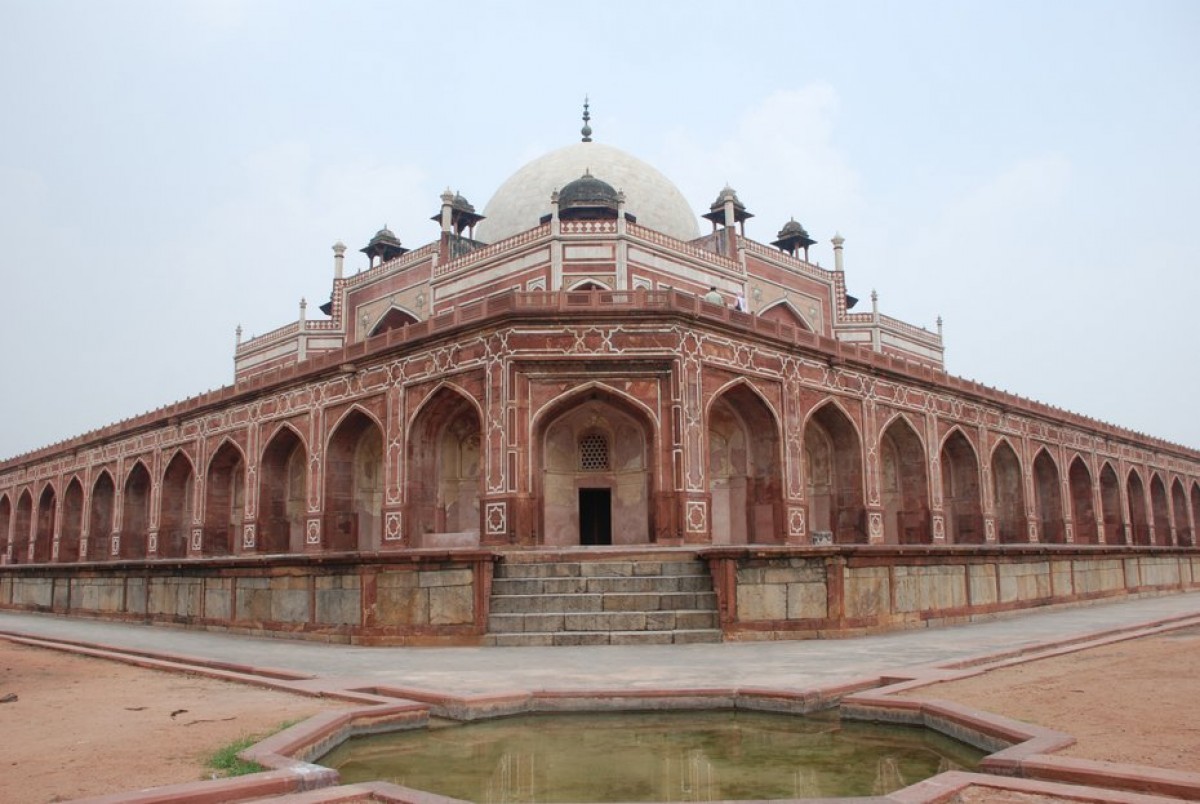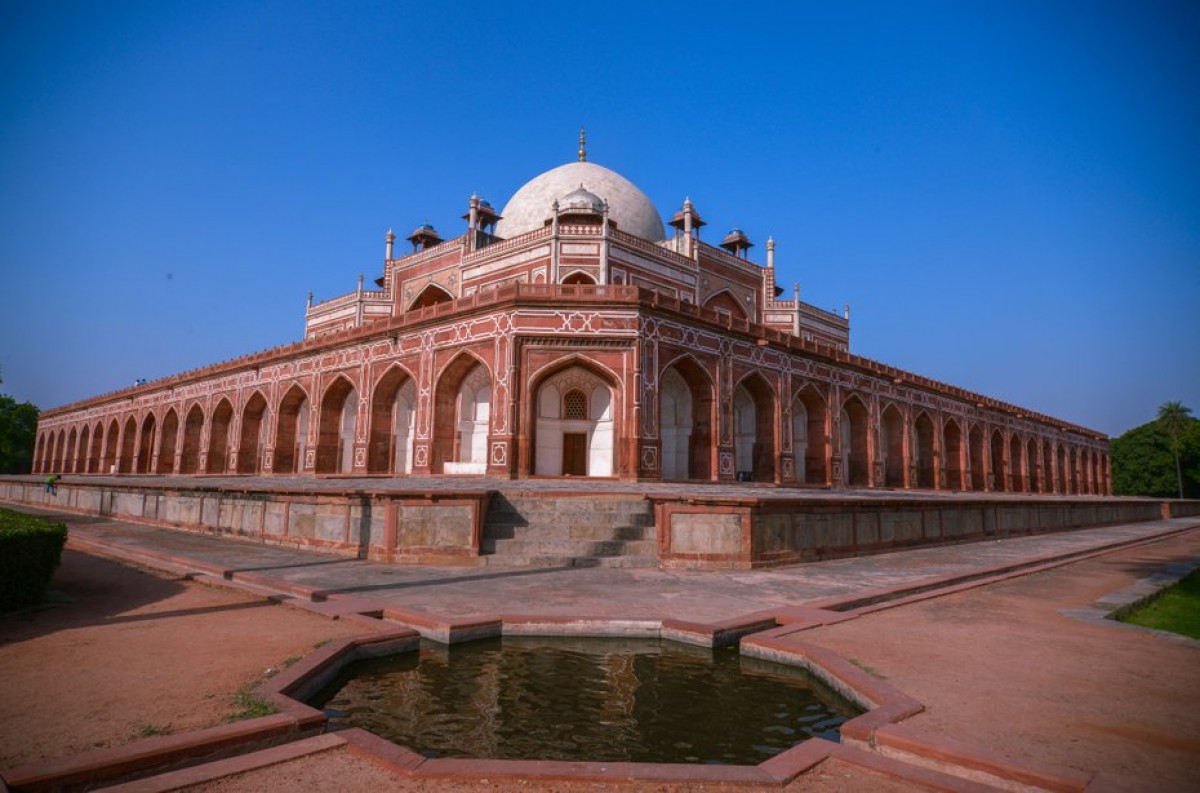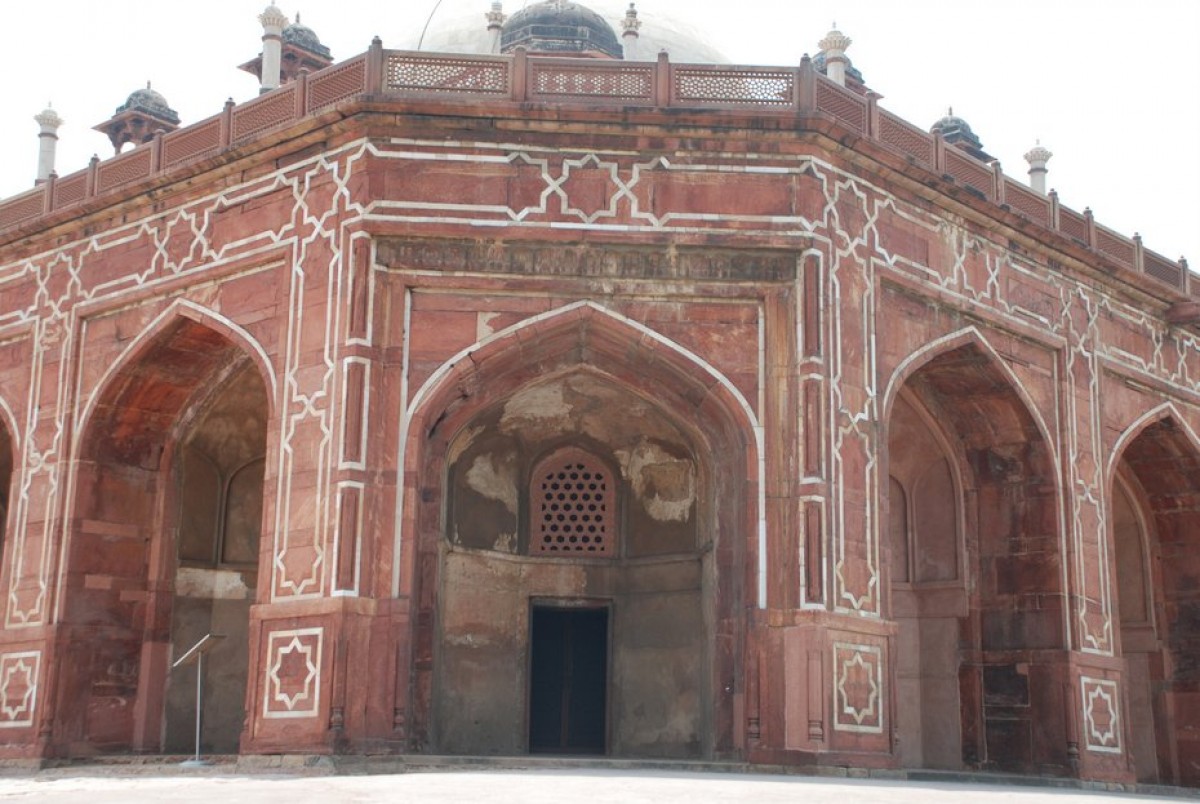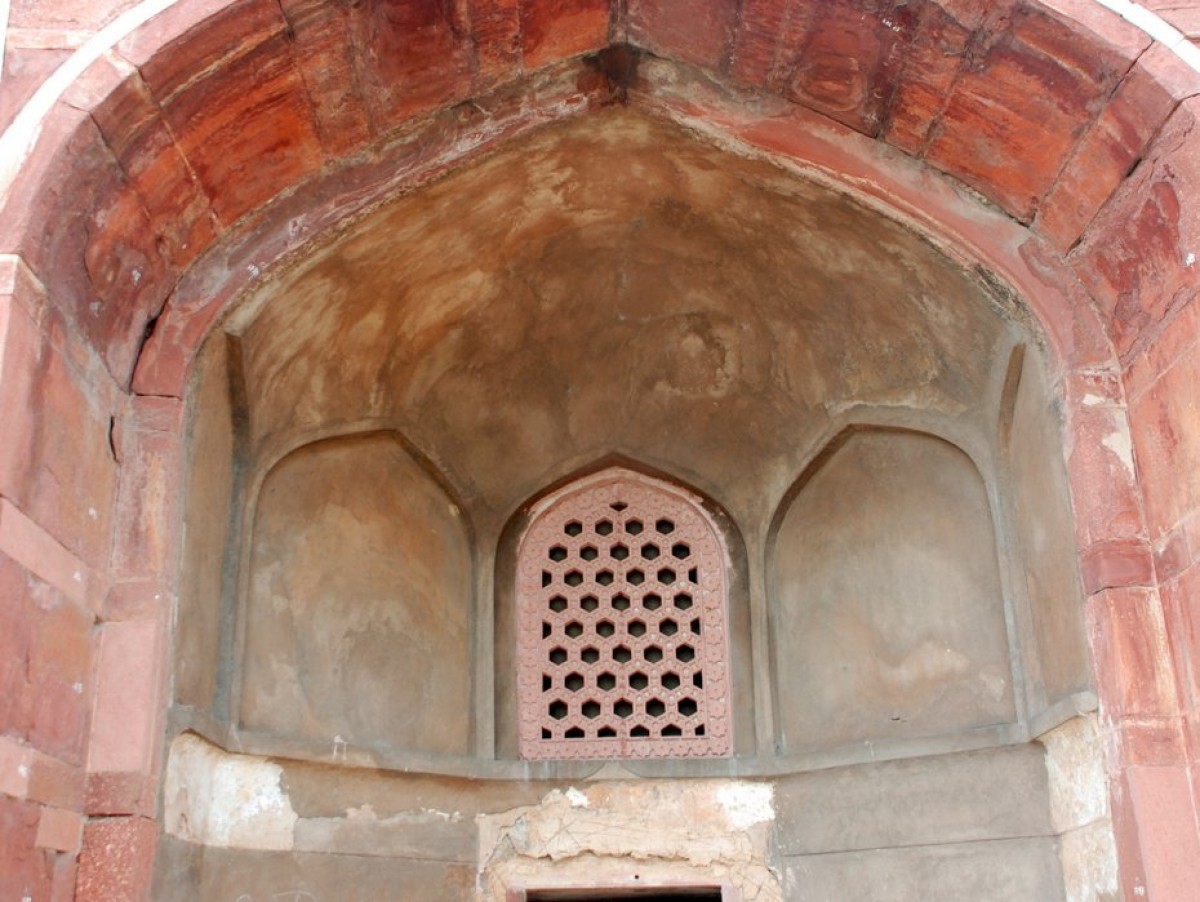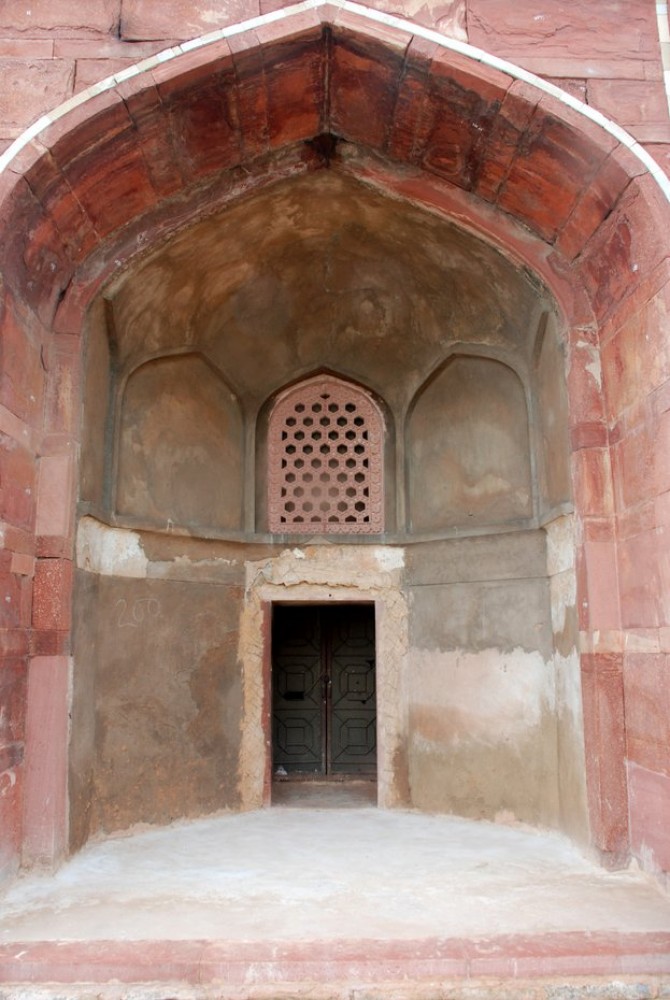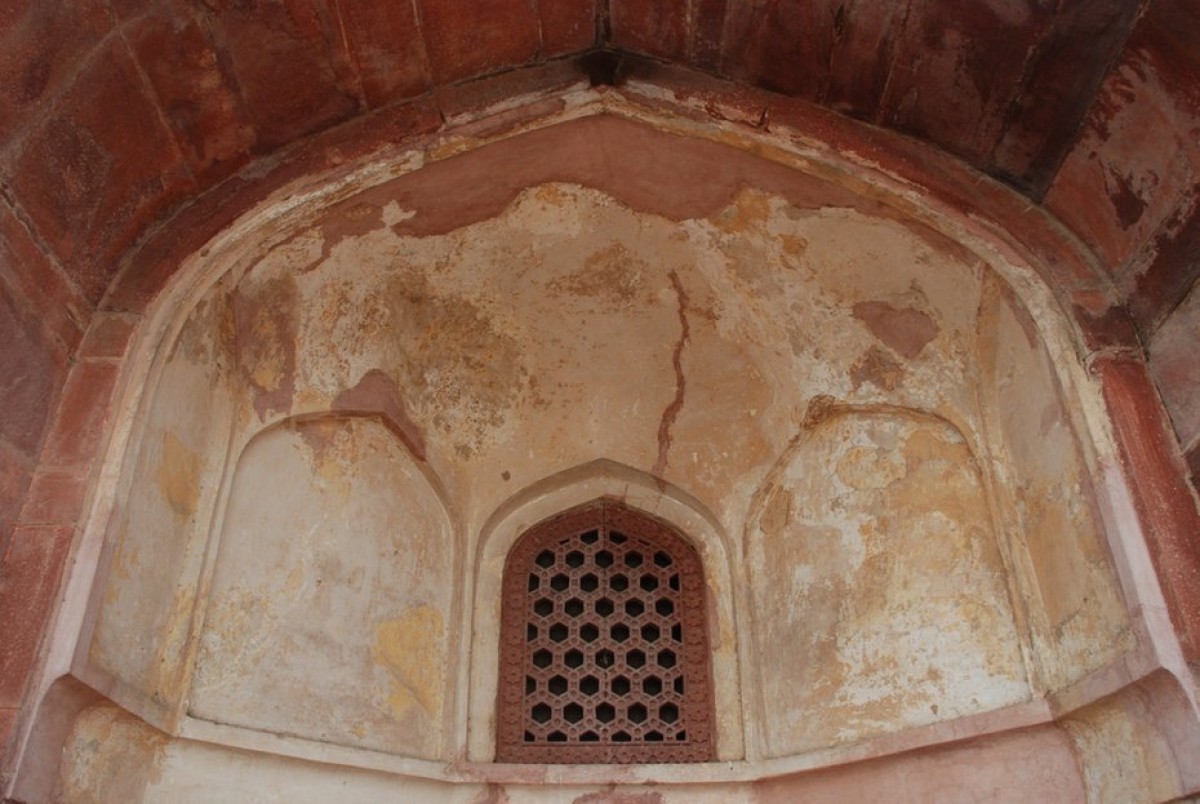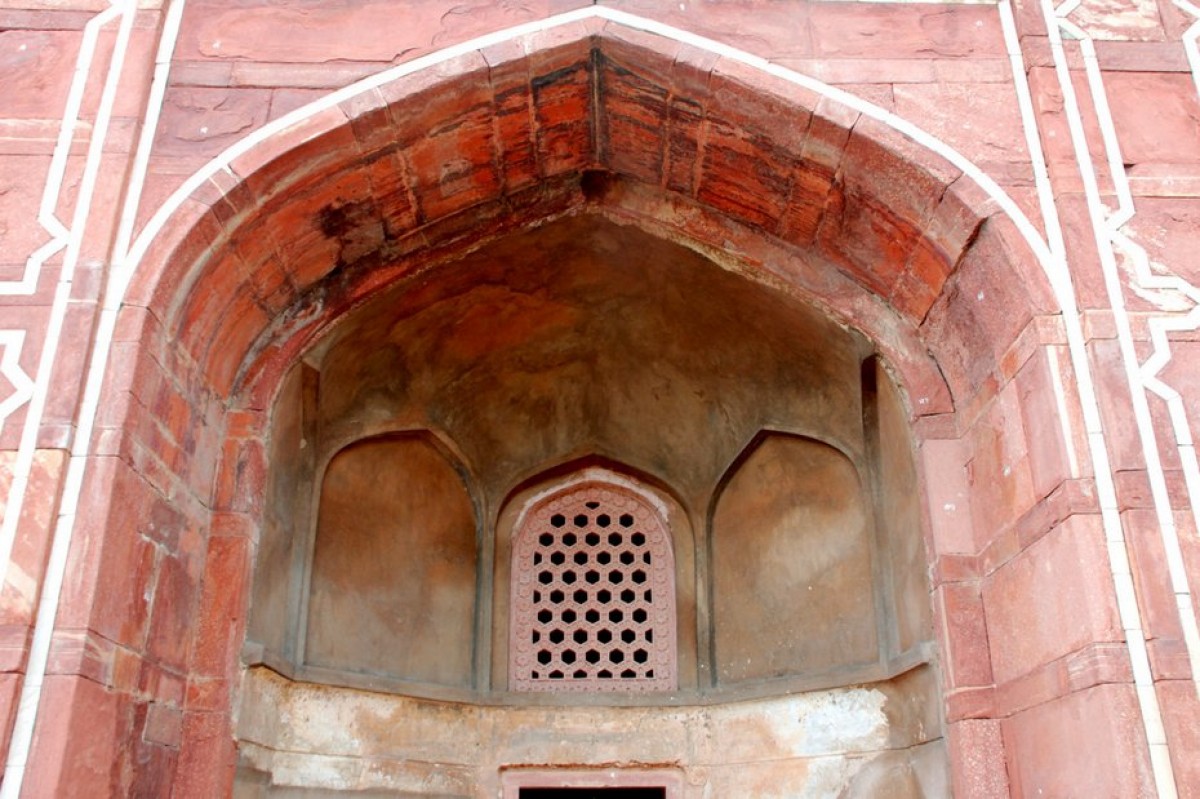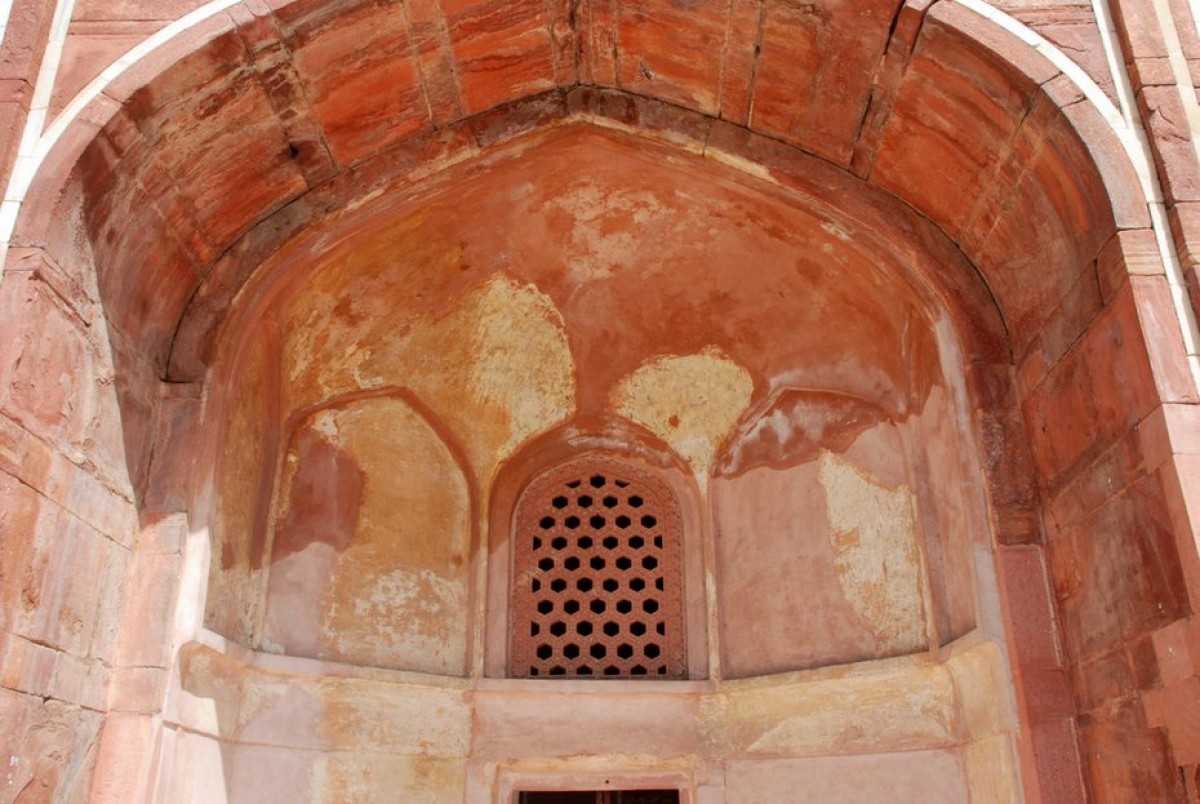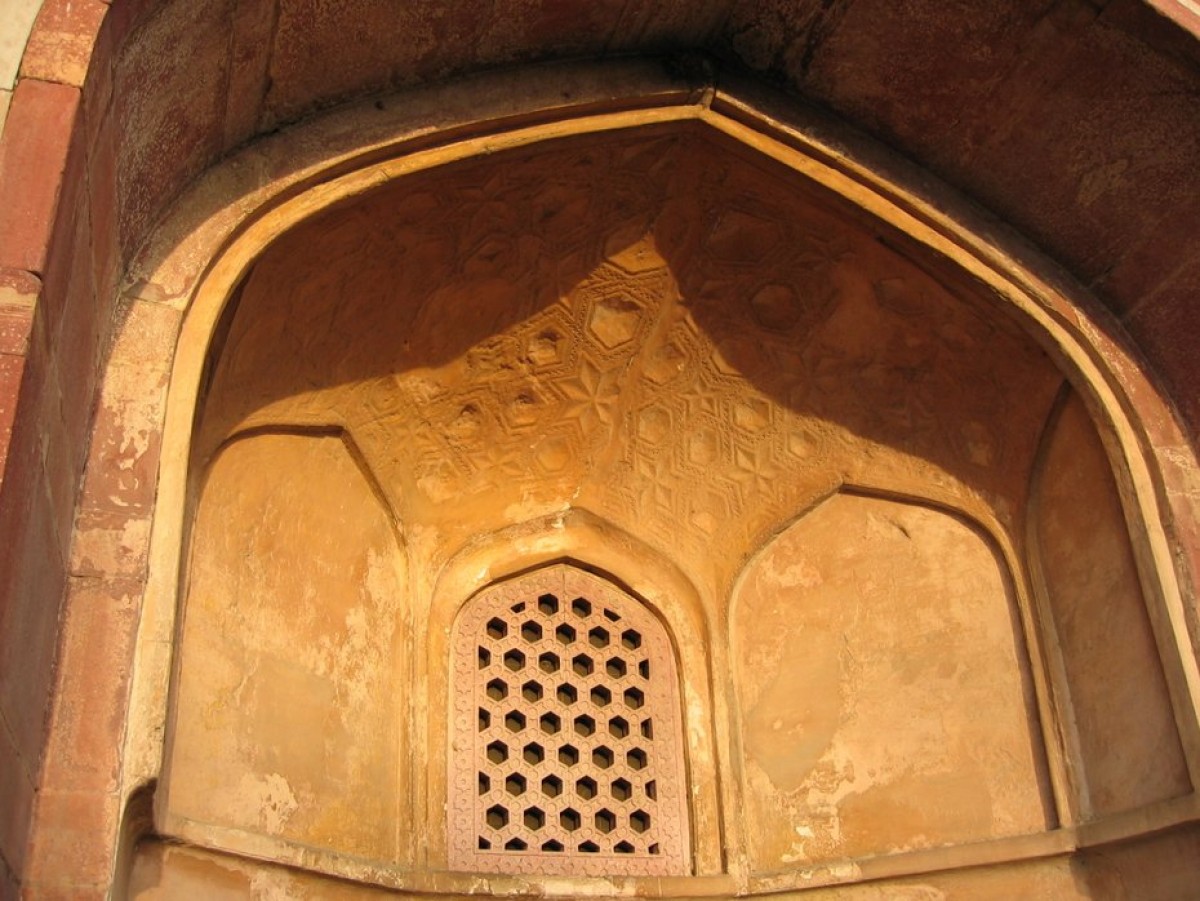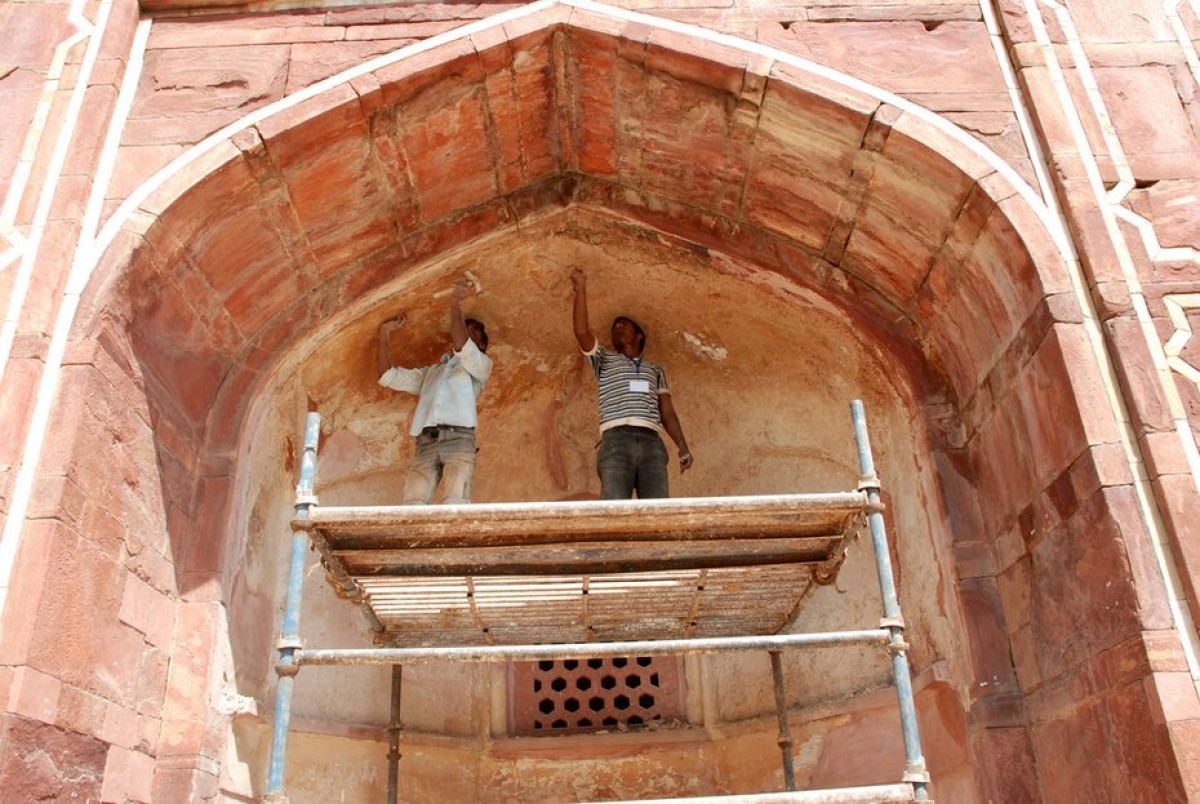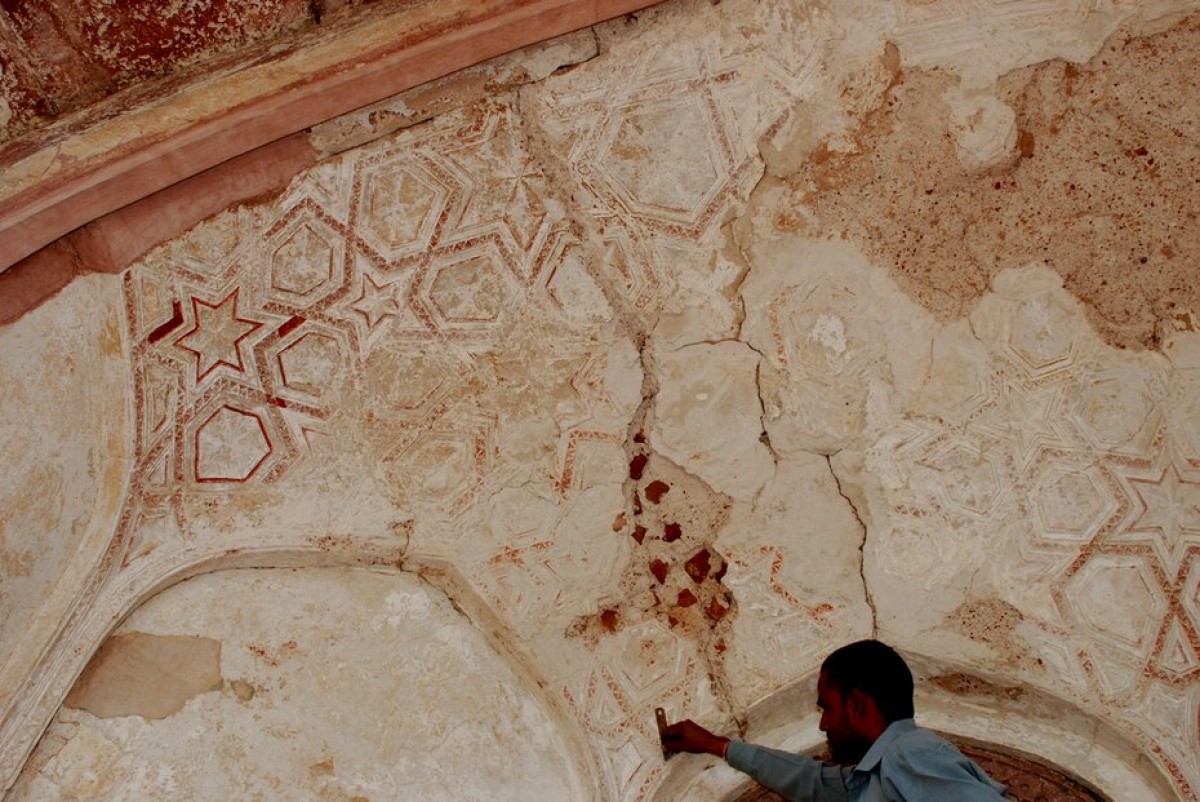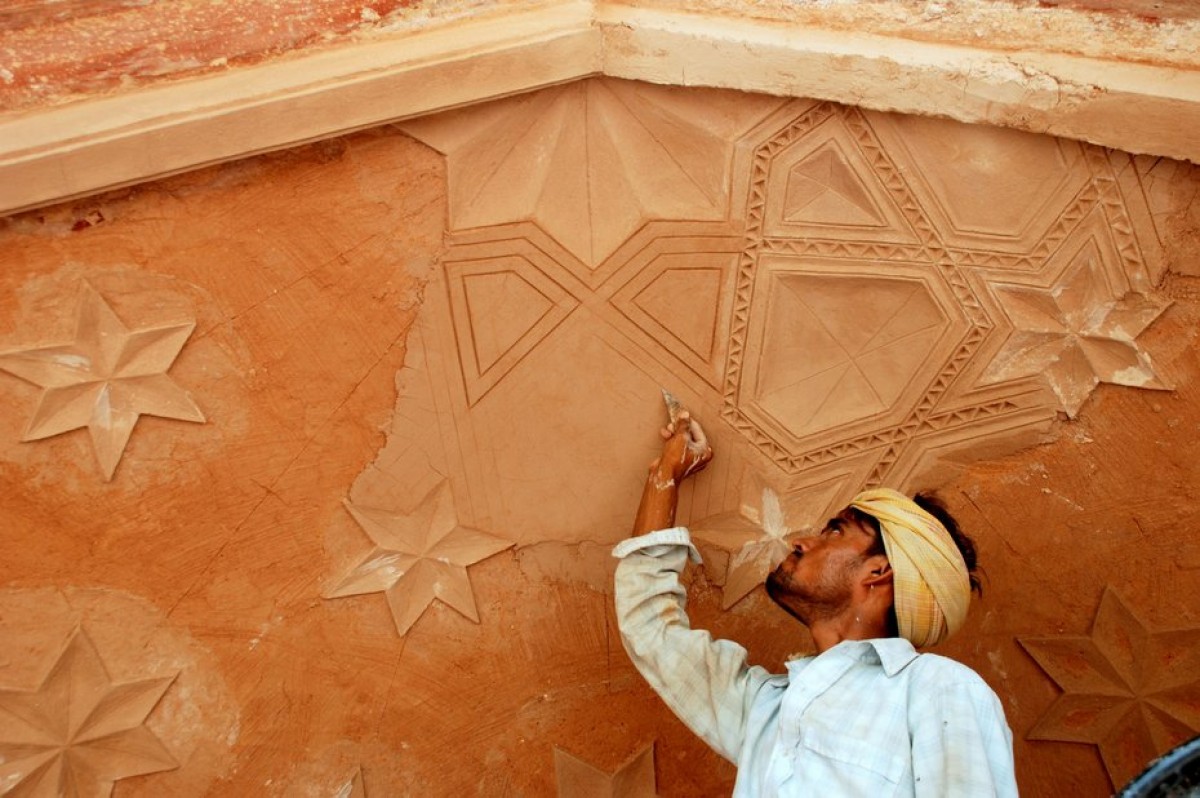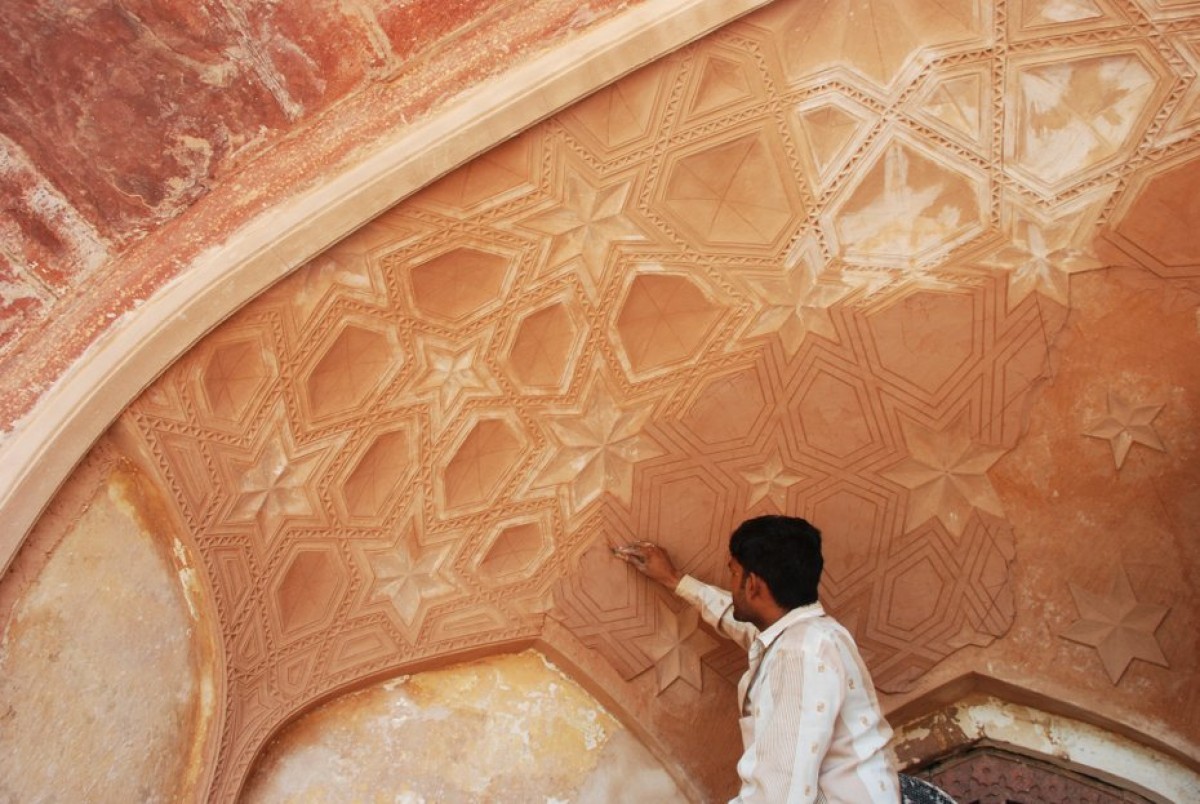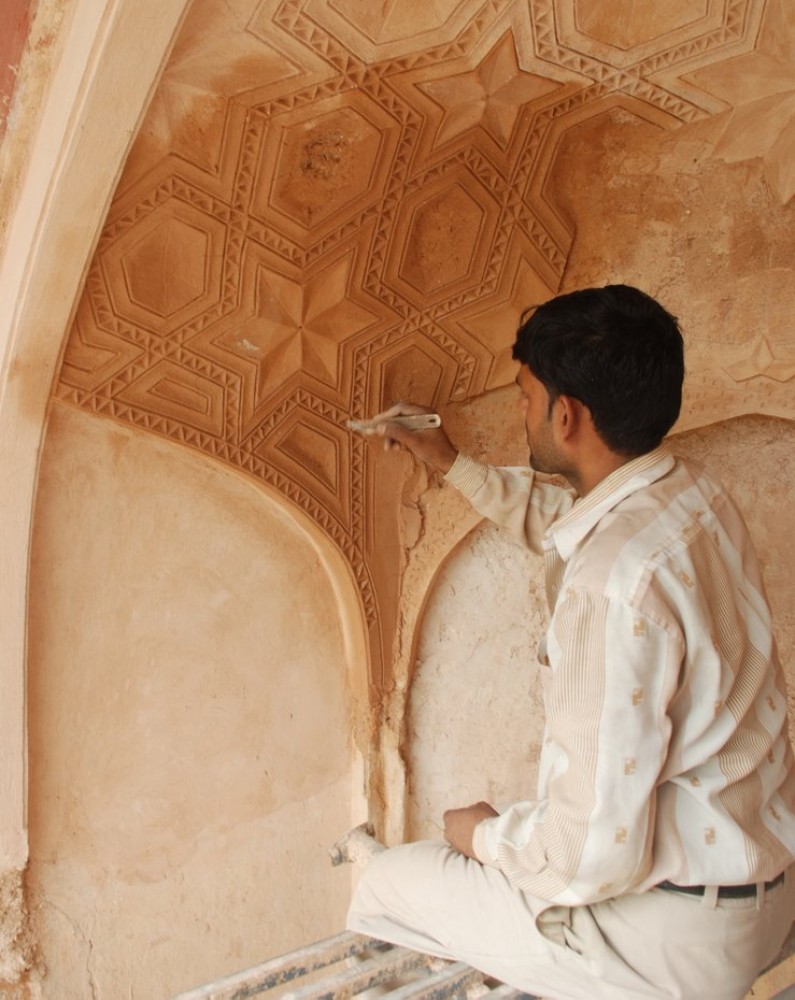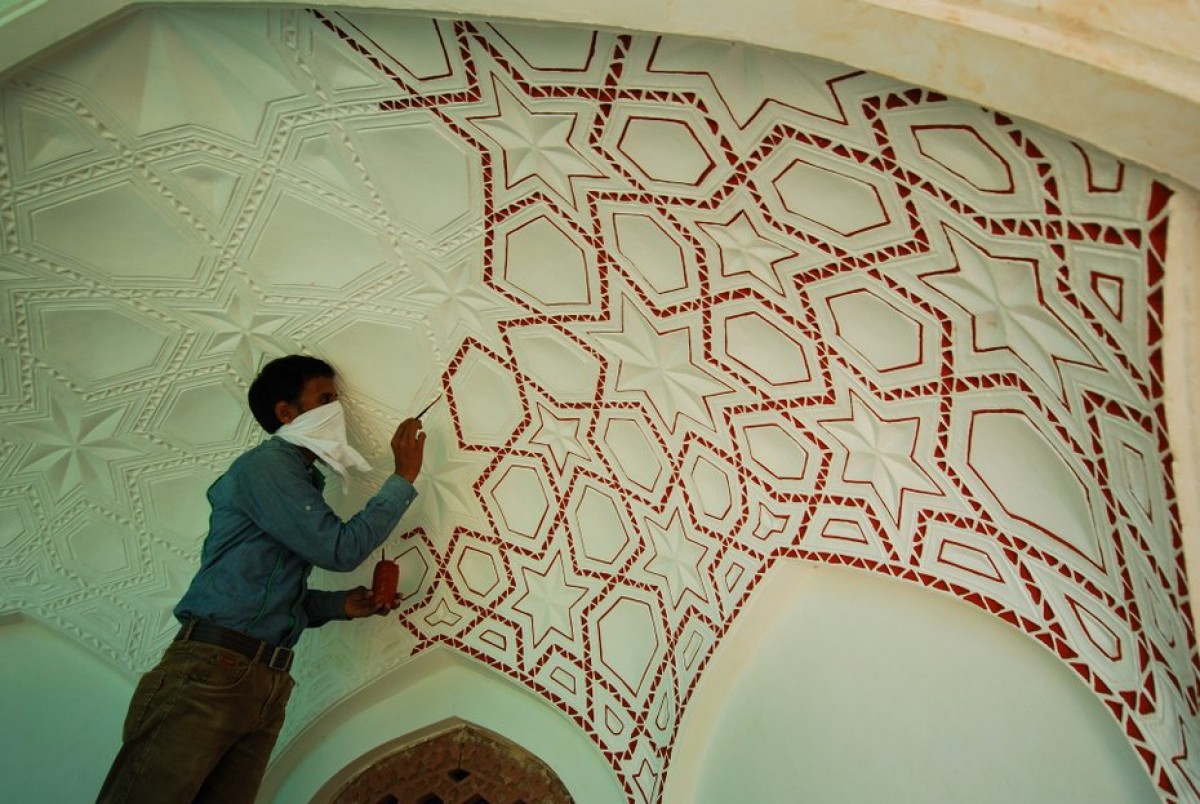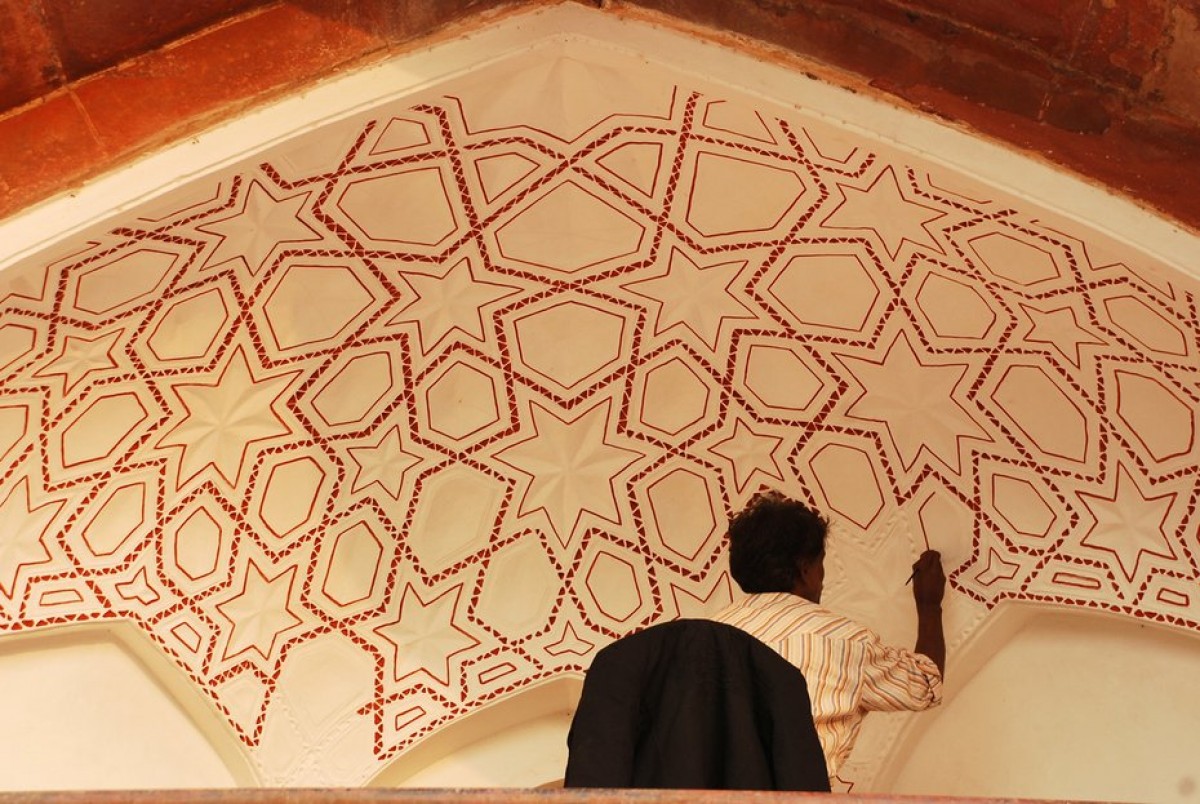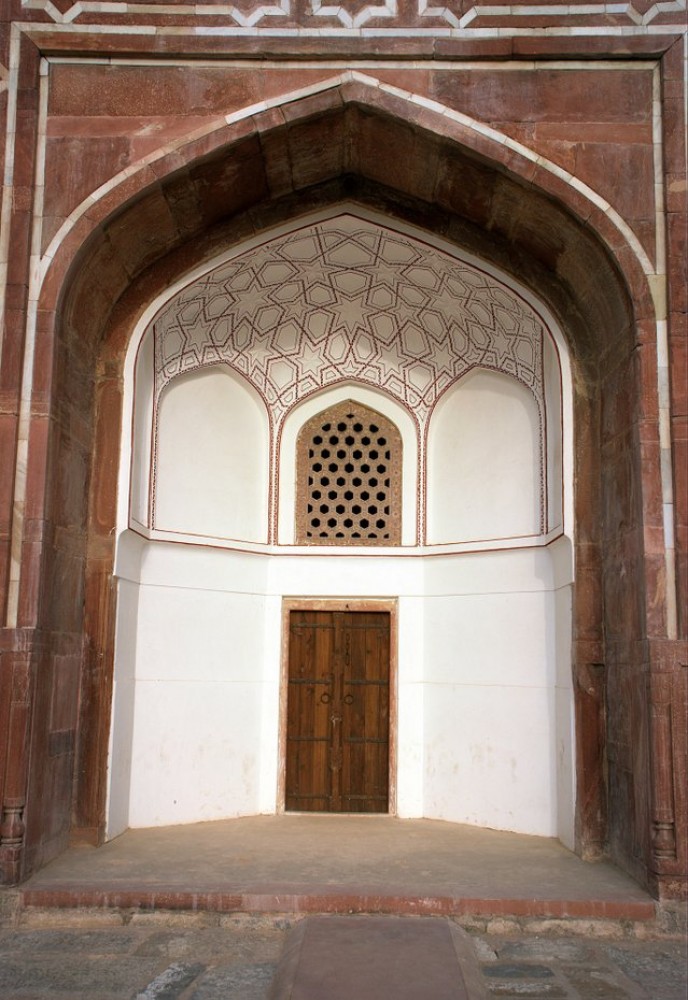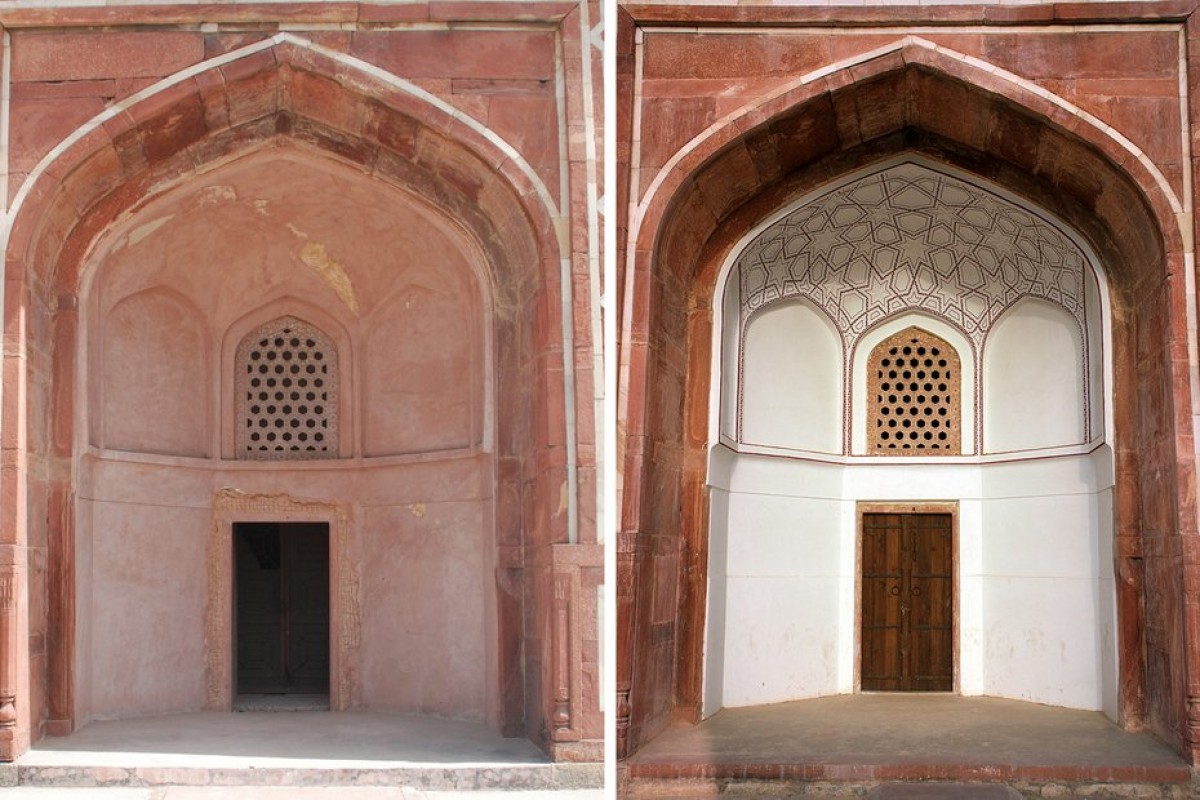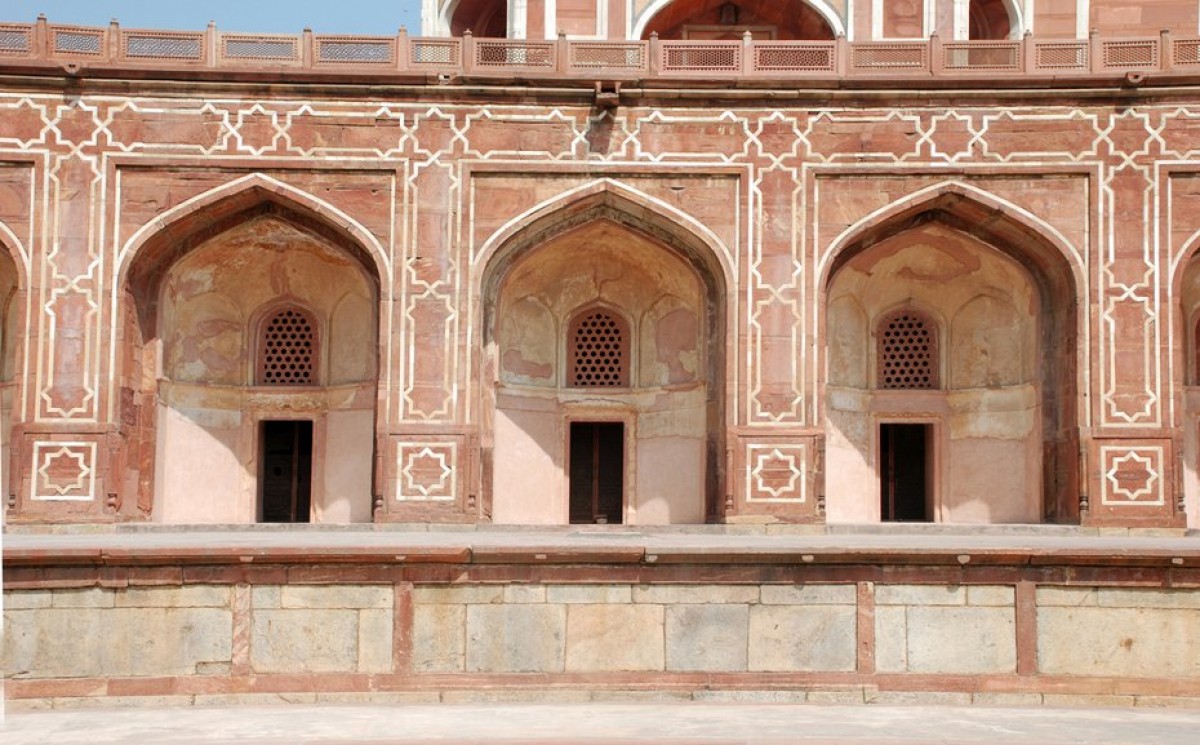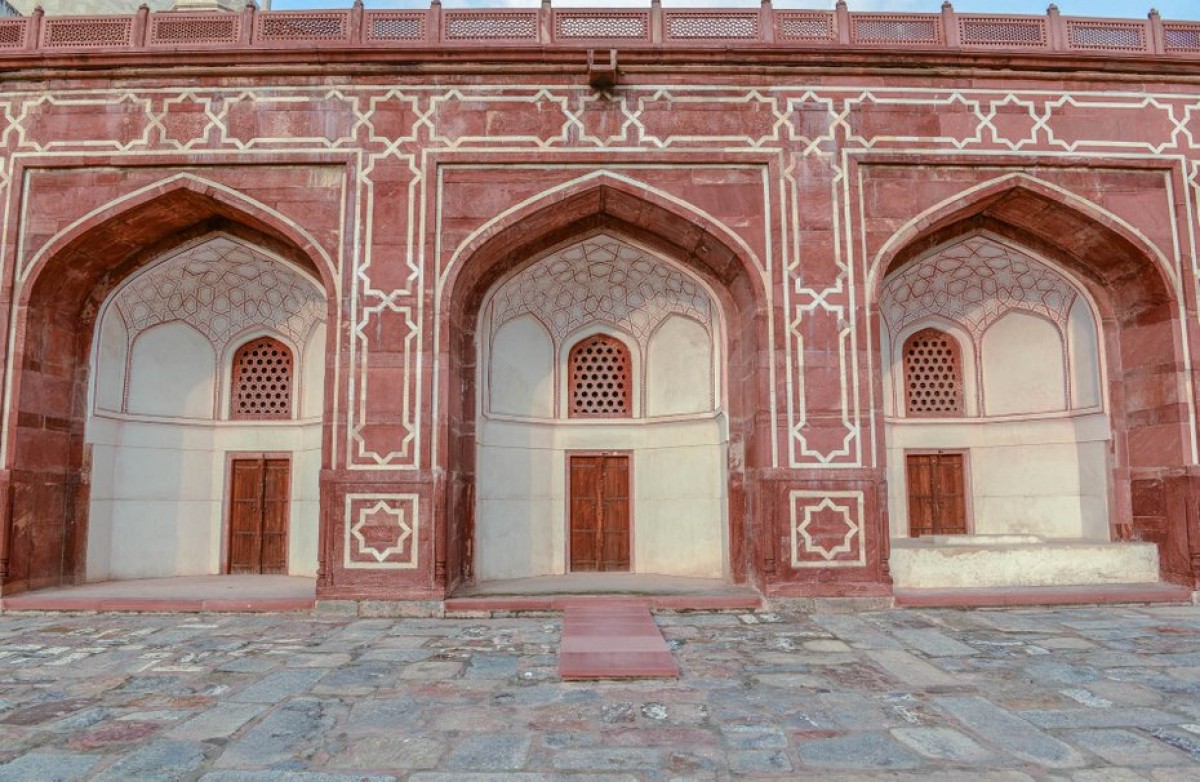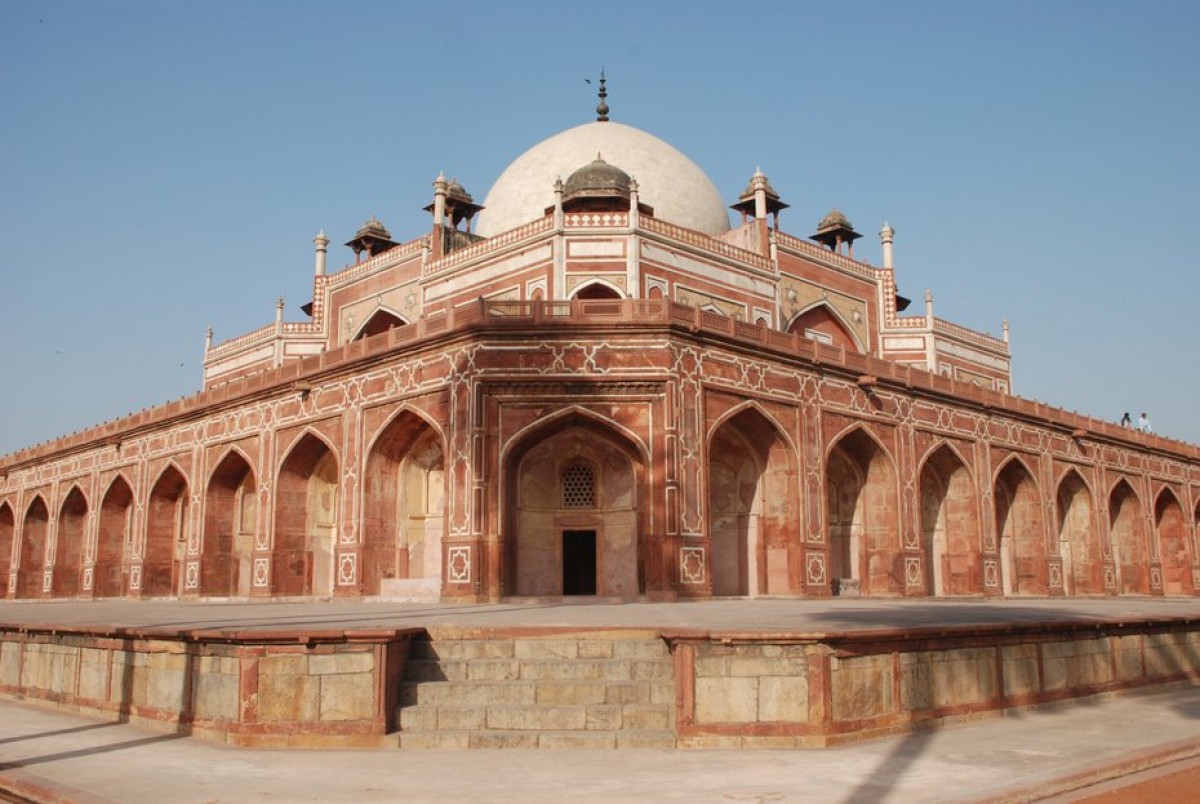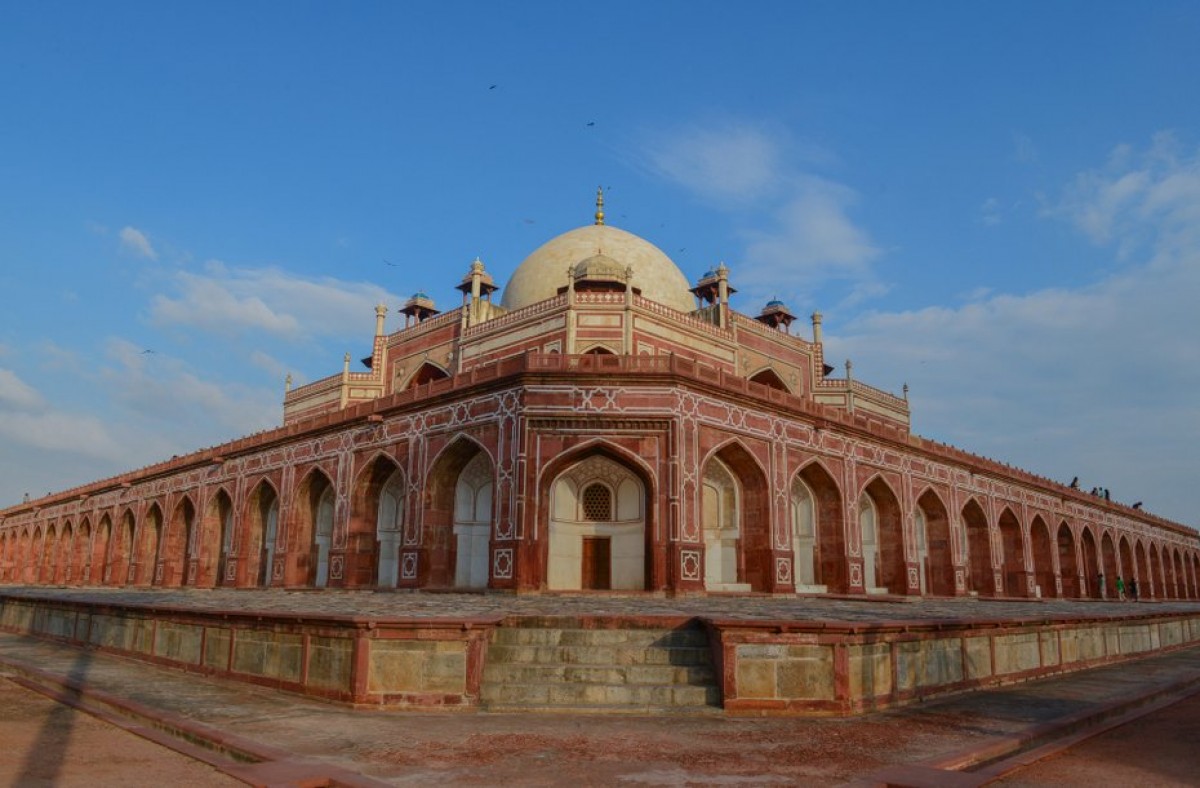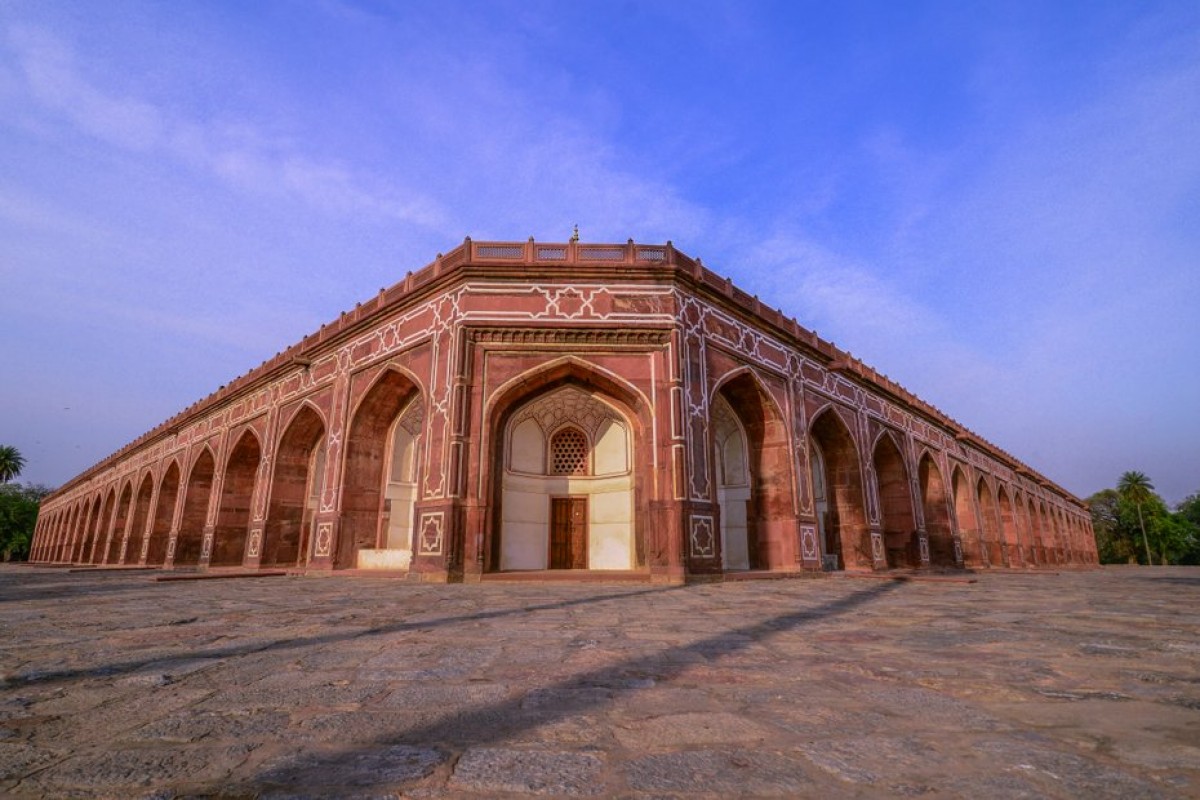
The red-white contrast of the façade is the predominant architectural feature of Humayun’s Tomb. The pattern of the stonework is carefully worked out to emphasize the significant parts of the building.
The architectural integrity of Humayun’s Tomb had been severely compromised with the star-shaped plasterwork of the half domed alcoves of the lower façade replaced with plain cement plaster. The cement plaster was also causing further deterioration of the sandstone. Thus, in order to restore the intention of the original builders and ensure long term preservation the star shaped ceilings on the 68 lower chambers has been restored.
At the onset, the cement plaster from the lower cells was carefully removed in 2009, preserving any patches of original plaster that would have survived the 20th century ‘repairs’ carried out using cement plaster. All 68 lower cells were plaster with lime mortar with the highly ornamental plasterwork restored to all cells. This covered roughly 1.6% of the façade area yet had a significant impact on the appearance of the building. In 2012 the red polychromy pattern in the netting has been restored to most of the cells.
However, works had to be discontinued as despite resetting the sandstone paving of the upper plinth, the water percolation from the top surface continued. Over one year of continuous grouting was required to halt water percolation and in turn to recommence ornamental plasterwork. Also, the masonry of the lower cells had absorbed water percolating from the roof above for decades and much dampness remained trapped in the masonry walls.
Lime plaster was applied in layers, and then incised to bring out the desired patterns transforming the character of the mausoleum, from ruinous to splendour. The final 1 mm thick layer of lime-marble dust plaster not only served as a protective layer for the underlying plaster but the Mughals had used it to mimic white marble. The ornamental patterns in incised plasterwork were once again emphasized with red lime plaster obtained by the traditional additive of geru powder.
After replacement of the cement plaster, the water started evaporating from the newly applied lime plastered surfaces. The architectural integrity of the external façade of the lower plinth which had been lost due to materials deterioration and inappropriate repair works has been revived.























